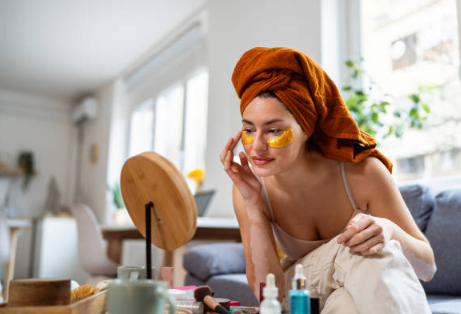“Glass skin” has been a buzzword in the beauty world for quite some time now. This trend, which originated in South Korea, refers to skin that looks incredibly smooth, dewy, and almost translucent—like glass. Over the past few years, countless K-beauty brands (like Peach & Lily and Glow Recipe) have launched products specifically designed to help achieve that radiant glass-skin look.
If you’re intrigued by the idea of glass skin and want to jump on the trend, you’re in the right place. Here’s everything you need to know—and how to make it happen.
What Is Glass Skin?
Glass skin is all about achieving a complexion that’s smooth, even-toned, luminous, and plump. It doesn’t mean your skin has to be flawless—yes, even acne-prone skin can glow. The goal is to bring your skin to its healthiest, most hydrated, and radiant state.
Getting glass-like skin isn’t just about using the right products. Healthy lifestyle habits also play a big role—think: getting enough sleep, eating a balanced diet, minimizing alcohol intake, managing stress, and staying hydrated. While skincare products are key to achieving a glowy finish, your skin won’t reflect light well if it’s dehydrated from the inside out.

How to Achieve Glass Skin
Double Cleanse Your Face
One cleanse usually isn’t enough to remove all the dirt, oil, sunscreen, and makeup from your skin. That’s where double cleansing comes in, especially if you wear heavy makeup or SPF.
Start with an oil-based cleanser to break down makeup, sunscreen, and excess sebum—focusing on areas prone to clogged pores. Follow it up with a gentle water-based cleanser to remove residue. If you have dry skin, opt for a hydrating water-based cleanser, as moisture is key to that smooth, radiant look. For acne-prone skin, use a cleanser with salicylic acid, which is known for targeting breakouts.
Exfoliate
Exfoliation helps slough off dull, dead skin cells, preventing clogged pores and smoothing uneven texture. By removing buildup, you reveal fresh, healthy skin underneath that naturally reflects light and glows.
There are a few exfoliation methods to consider. A gentle cleanser with active exfoliating ingredients (like salicylic acid) can help even out the skin without being too harsh. Many people prefer exfoliating cleansers over leave-on exfoliating serums since they rinse off easily and tend to be less irritating.
Chemical exfoliants like AHAs (alpha hydroxy acids), BHAs (beta hydroxy acids), and PHAs (polyhydroxy acids) can break down dead skin cells and help them shed, leaving behind smoother, more radiant skin.
Thinking about using a physical exfoliator (like a scrub)? You might want to skip it. These can be abrasive and may damage the skin if not used carefully.
Hydrate, Hydrate, Hydrate
Moisture is probably the most important step in achieving glass skin. Dry skin simply doesn’t reflect light the same way hydrated skin does.
Use hydrating toners, serums, and essences—layer them if your skin tends to be dry. Instead of just rubbing products onto your face, try pressing or patting them into your skin to enhance absorption. If you’re using multiple products, let each layer fully absorb before applying the next.
What ingredients should you look for? Ceramides and hyaluronic acid are excellent for strengthening the skin barrier and plumping the skin, giving you that ultra-smooth, dewy appearance.

To lock in moisture, consider using a non-comedogenic face oil as the final step. People who are serious about glowing skin often love the healthy sheen facial oils can provide.
Never Skip Sunscreen
Daily sunscreen is non-negotiable—even on cloudy days. UV rays can cause dark spots, uneven skin tone, and break down collagen, leading to sagging and dullness (a process called solar elastosis).
Healthy skin glows naturally, but it can take a long time to recover from sun damage. Sunscreen is the simplest way to protect your progress. From lotions and sticks to sprays and oils, there are plenty of SPF options to suit every skin type and preference.